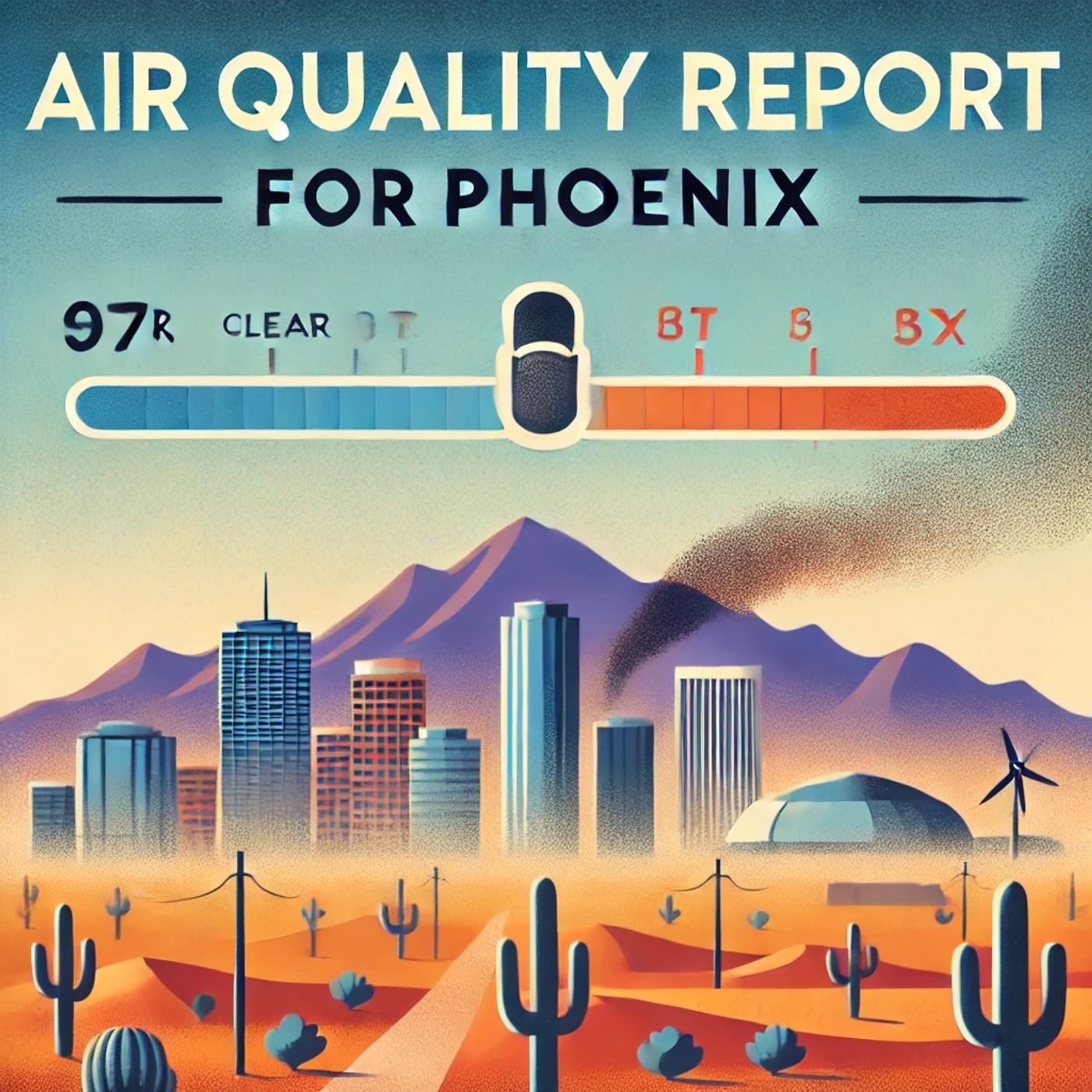Listen "Phoenix Air Quality Varies Across Regions Due to Environmental and Human Factors"
Episode Synopsis
Today, the air quality in Phoenix presents a mixed bag, varying notably across its different regions due to a combination of environmental and human-made factors. Phoenix, situated in the arid landscape of Arizona, is known for its hot desert climate and sprawling urban development, which collectively influence its air quality patterns.As of today, the Air Quality Index, commonly referred to as AQI, ranges from moderate to unhealthy for sensitive groups in parts of the city. The AQI is a standardized measure used to communicate how polluted the air currently is or how polluted it is forecast to become. An AQI value between 51 and 100 is considered moderate, meaning air quality is acceptable; however, for some pollutants, there may be a moderate health concern for a very small number of people who are unusually sensitive to air pollution. For today, the primary pollutants contributing to the AQI in Phoenix are particulate matter, specifically PM10 and PM2.5, and ground-level ozone. Particulate matter, or PM, consists of a mixture of tiny particles and liquid droplets in the air. PM10 refers to particulates with diameters that are 10 micrometers or smaller, while PM2.5 refers to fine particulates that are 2.5 micrometers or smaller. These tiny particles can penetrate deep into the respiratory system, leading to various health issues, especially for individuals with pre-existing respiratory conditions, children, and the elderly.Ground-level ozone, another significant pollutant in Phoenix, forms when pollutants emitted by cars, power plants, industrial boilers, refineries, and other sources chemically react in the presence of sunlight. Given Phoenix's abundant sunshine and high temperatures, ozone formation is particularly prevalent. While beneficial in the stratosphere, protecting life on Earth from the sun's harmful ultraviolet rays, at ground level, ozone is a harmful air pollutant that can cause respiratory problems and other health issues.Today's meteorological conditions are also playing a pivotal role in the air quality levels. High temperatures and limited wind can cause pollutants to linger in the atmosphere, exacerbating the overall air quality. Current forecasts indicate temperatures reaching upwards of 100 degrees Fahrenheit, which, combined with light winds, contribute to the formation and stagnation of pollutants such as ground-level ozone.In response to today's air quality conditions, it is advised for individuals in sensitive groups, including those with respiratory conditions, children, and the elderly, to limit prolonged outdoor exertion. On days with elevated AQI levels, it is recommended to stay indoors where air filtered by air conditioning systems can reduce exposure to outdoor pollutants.Efforts are ongoing by both state and local authorities to monitor and improve air quality in Phoenix. Measures include promoting the use of public transportation, encouraging carpooling, and implementing stricter emissions standards for industrial and vehicular sources. These initiatives aim to mitigate pollution levels and enhance the overall air quality for residents and visitors alike.As Phoenix continues to grow, maintaining a watchful eye on air quality and taking proactive steps to improve it remain crucial for the health and well-being of its inhabitants.This content was created in partnership and with the help of Artificial Intelligence AI
More episodes of the podcast Phoenix Air Quality Report - Daily
Phoenix Enjoys Excellent Air Quality Today
23/08/2025
 ZARZA We are Zarza, the prestigious firm behind major projects in information technology.
ZARZA We are Zarza, the prestigious firm behind major projects in information technology.
